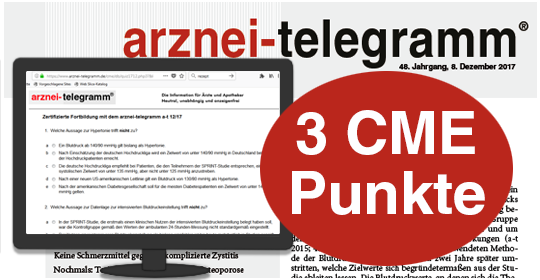Translation of a-t 2021; 52: 87
In Brief
Dapagliflozin (FORXIGA) no longer approved for type 1 diabetes
From 25 October 2021 onwards, dapagliflozin (FORXIGA) must no longer be used to treat type 1 diabetes (1). However, the background to this does not involve new safety findings but a requirement from the European Medicines Agency (EMA) to carry out a safety study on diabetic ketoacidosis with dapagliflozin in type 1 diabetes (2,3). This would have required the inclusion of the black triangle () for all materials of the SGLT-2 inhibitor, also for the doses approved for other indications, to indicate that FORXIGA is subject to "additional monitoring". According to the company, this could have unsettled doctors and patients who use dapagliflozin in other indications. AstraZeneca has therefore withdrawn the indication for type 1 diabetes (3). We had already advised against its use in type 1 diabetes when the indication was extended in 2019 as diabetic ketoacidosis, which can be life-threatening, occurred common and far more frequently with dapagliflozin therapy compared to placebo in the approval studies (a-t 2019; 50: 57-9). We started to label drugs with a black triangle in 2004 (a-t 2004; 35: 119-20), the EMA began to do so in 2012 (a-t 2012; 43: 104 and 2019; 50: 103-5). We consider it useful to label drugs with new indications or relevant risk signals with a black triangle too. Greater attention should definitely be paid to the black triangle, - Ed.
| 1 | AstraZeneca: Rote-Hand-Brief ("Dear Doctor Letter"), October 2021; https://a-turl.de/2gq4 |
| 2 | EMA: CHMP (Committee for Medicinal Products for Human Use) Minutes for the meeting on 25-29 January 2021, March 2021; https://a-turl.de/wdgw |
| 3 | AstraZeneca: Statement dated 29 Oct. 2021; https://a-turl.de/lb2s (login required) |
© arznei-telegramm (Berlin/Germany), November 2021, protected by copyright laws.
Autor: Redaktion arznei-telegramm - Wer wir sind und wie wir arbeiten
Diese Publikation ist urheberrechtlich geschützt. Vervielfältigung sowie Einspeicherung und Verarbeitung in elektronischen Systemen ist nur mit Genehmigung des arznei-telegramm® gestattet.
